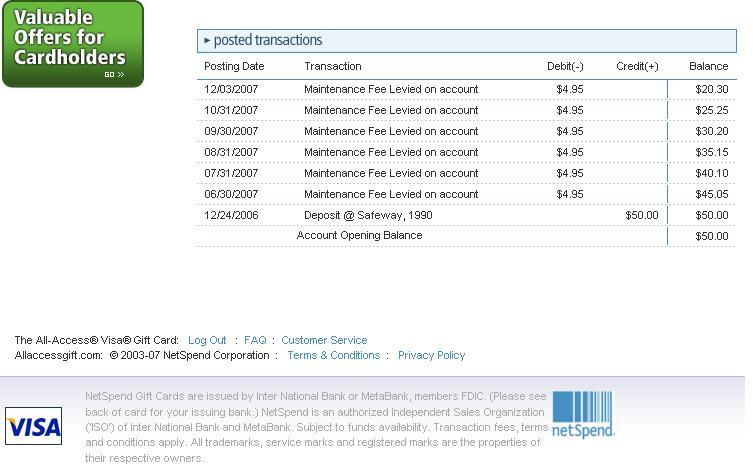
Sunday, December 30, 2007
Saturday, December 29, 2007
Three Reasons Not To Use Amazon SQS
I've seriously considered Amazon's Simple Queue Service (SQS) for a project I'm working on. That is, until I read the fine print.
1. SQS does not guarantee order which fundamentally violates the basic principle of the queue data structure.
2. SQS does not guarantee deletion of a message on the queue meaning that you must handle the case where a message could be processed twice.
3. SQS does not guarantee returning all the messages in the queue when queried.
Very disappointing. What appealed to me most was the fact that the queue service is guaranteed to always be up and running.
Here's Amazon's SQS documentation:
1. SQS does not guarantee order which fundamentally violates the basic principle of the queue data structure.
2. SQS does not guarantee deletion of a message on the queue meaning that you must handle the case where a message could be processed twice.
3. SQS does not guarantee returning all the messages in the queue when queried.
Very disappointing. What appealed to me most was the fact that the queue service is guaranteed to always be up and running.
Here's Amazon's SQS documentation:
The following information can help you design your application to work with Amazon SQS correctly.
Message order—SQS makes a best effort to preserve order in messages, but due to the distributed nature of the queue, we cannot guarantee you will receive messages in the exact order you sent them. If your system requires that order be preserved, we recommend you place sequencing information in each message so you can reorder the messages upon receipt.
At-least-once delivery—SQS stores copies of your messages on multiple servers for redundancy and high availability. On rare occasions, one of the servers storing a copy of a message might be unavailable when you receive or delete the message. If that occurs, the copy of the message will not be deleted on that unavailable server, and you might get that message copy again when you receive messages. Because of this, you must design your application to be idempotent (i.e., it must not be adversely affected if it processes the same message more than once).
Message sampling—When you retrieve messages from the queue, SQS samples a subset of the servers (based on a weighted random distribution) and returns messages from just those servers. This means that a particular receive request might not return all your messages. Or, if you have a small number of messages in your queue (less than 1000), it means a particular request might not return any of your messages, whereas a subsequent request will. If you keep retrieving from your queues, SQS will sample all of the servers, and you will receive all of your messages. The figure below shows messages being returned after one of your system components makes a receive request. SQS samples several of the servers (in blue) and returns the messages from those servers (Message A, C, D, and B). Message E is not returned to this particular request, but it would be returned to a subsequent request.
Thursday, December 20, 2007
What Every Man Wants In Bed
No, this isn't porn – it's actually better. I have got to get me one of these
Labels:
Life
Friday, December 7, 2007
Gift Cards
We gave cash, instead of a gift card, to my sister-in-law for her birthday this year. It felt slightly awkward but it saves everyone money.
These gift card charges are just wrong - what has to be maintained that requires almost $5 each month? Is it really that much trouble for Visa to hold on to its customers' funds for more than six months?
(click to enlarge)

These gift card charges are just wrong - what has to be maintained that requires almost $5 each month? Is it really that much trouble for Visa to hold on to its customers' funds for more than six months?

Sunday, December 2, 2007
Airline Departure vs. Actual Departure
Most people realize that, for an airline, an "on-time departure" means that the plane pushed back from the gate within 15 minutes of their scheduled departure time. Of course, the airplane may sit on the tarmac for who knows how long.
Enter one of the 'Net's best kept secrets, flightaware.com, which is great at displaying realtime aircraft tracking from the FAA.
UAL reports that this flight I was tracking (UAL 5744) departed seven minutes ahead of schedule. So, what time do I really need to get to the airport to pick up my wife?

Well, it turns out that the flight went wheels-up almost 25 minutes late, but it still arrived ahead of schedule.

Not bad - in reality, this flight typically takes 25 minutes from takeoff to landing.
Enter one of the 'Net's best kept secrets, flightaware.com, which is great at displaying realtime aircraft tracking from the FAA.
UAL reports that this flight I was tracking (UAL 5744) departed seven minutes ahead of schedule. So, what time do I really need to get to the airport to pick up my wife?

Well, it turns out that the flight went wheels-up almost 25 minutes late, but it still arrived ahead of schedule.

Not bad - in reality, this flight typically takes 25 minutes from takeoff to landing.
Subscribe to:
Posts (Atom)
